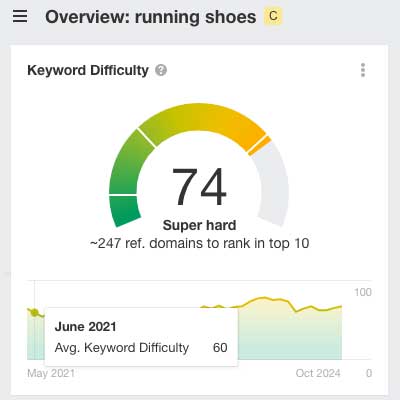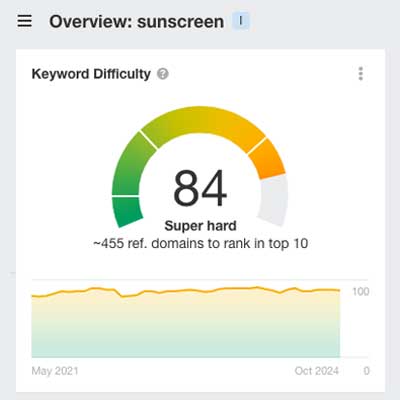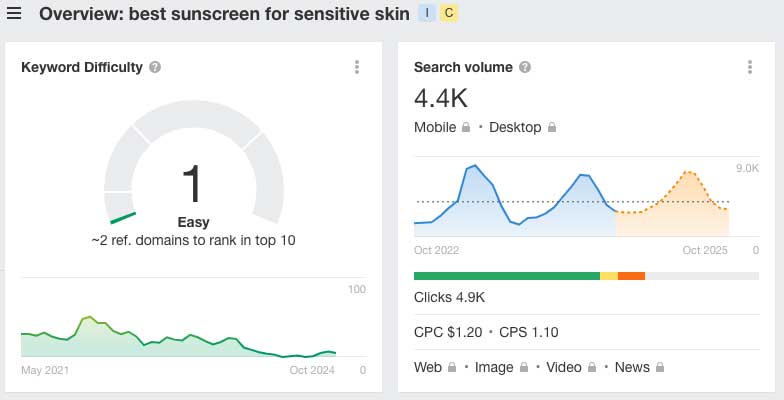Keywords are the building blocks of any SEO strategy. They are the search terms that connect users with relevant content, services, or products. Without an effective keyword strategy, even the best content may go unnoticed.
A well-planned keyword strategy helps increase a website’s visibility and drive relevant traffic. With the right keywords, you can reach your target audience more effectively, meet their needs, and boost your website’s performance.
This guide will help you understand keyword types, the importance of search intent, and how competitor analysis can enhance your keyword strategy. We’ll also look at the various tools and techniques to find and integrate the best keywords for your business.
Types of Keywords
Keywords fall into several categories, each serving a unique role in SEO. Here’s an overview:
Short-Tail vs. Long-Tail Keywords
Short-tail keywords: are broad, general terms that typically contain one or two words, like “running shoes” or “sunscreen”. While these keywords have high search volumes, they also face intense competition and may not align well with specific search intent. It also can be extremely difficult to rank favourably for these keywords.


Long-tail keywords: are more specific phrases of three or more words, such as “best running shoes for plantar fasciitis” or “best sunscreen for sensitive skin”. Although long-tail keywords attract smaller audiences, they have less competition, are more targeted and often lead to higher conversion rates due to their specificity.

Using both short-tail and long-tail keywords is essential for a balanced approach. Short-tail keywords help build awareness, while long-tail keywords attract more qualified traffic by addressing specific needs.
Transactional, Informational, Navigational, and Commercial Keywords
Categorising keywords based on intent allows you to better align your content with users’ needs. Each type reflects a different goal in the user journey:
- Informational keywords: Used by searchers looking for answers or learning more about a topic, such as “how to run a marathon”. The intent here is to find out how to prepare for a marathon without any commercial interest. A guide with tips on how to train with a training schedule would most closely meet the need of the user.
- Transactional keywords: Reflect buying intent, like “buy running shoes” or “shop sunscreen for sensitive skin.” The user in both cases wants to see a product, not a guide as in the example above.
- Navigational keywords: Help users locate specific websites or brands, such as “Insta login” or “Google trends”.
- Commercial keywords: These keywords indicate that users are researching products or services before deciding on a purchase. Common phrases include “best organic sunscreen for sensitive skin” or “best waterproof running shoes”. Commercial keywords capture users in the “consideration” phase, where they compare options and read reviews to decide.
Understanding these types helps you create content that aligns with user intent, which can increase engagement, relevance, and satisfaction.
Search Intent and its Impact on Keyword Strategy
Search intent is the reason behind a search query. Recognising the purpose of user searches is essential to creating content that resonates and meets their needs. Knowing whether the searcher is looking for information, comparison, or a product will shape the structure and style of your content, helping you meet their expectations. Search intent and keywords are closely related.
Types of Search Intent
- Informational Intent: Searchers are seeking knowledge, such as “what are keywords” or “keyword research guide”.
- Navigational Intent: Searchers are looking for a specific brand, website, or page.
- Transactional Intent: Users with this intent are prepared to make a purchase (i.e. “buy 50 spf sunscreen online”).
- Commercial Investigation: This intent focuses on researching and comparing options, as in “Best running shoes for women” or “cheap running shoes for beginners”.
Tip: For a query like “best running shoes for women” the user is likely researching to compare models, so a product comparison article that details features, pricing, and pros and cons of various running shoes would meet their needs effectively.
Matching your content to search intent increases user engagement and helps ensure your pages rank well. By providing what users are seeking, you can retain their interest and improve your website’s relevance.
Keyword Research Process
Keyword research is the foundation of any SEO strategy. Following a structured approach helps you identify keywords that will drive relevant traffic and support your goals.
Identify Topics and Seed Keywords
Start by identifying topics relevant to your business. Then, create a list of short tail keywords or seed keywords that represent your products, services, or content themes, such as “organic skincare” or “running shoes”. These keywords serve as the starting point for expanding your list and getting deeper into more specific i.e. long tail keywords.
Expand Keywords Using Research Tools
Keyword research tools help you move beyond short tail keywords by offering suggestions based on actual user search data. Tools like Google Keyword Planner, Ahrefs, and SEMrush show metrics like search volume, competition, and trends, providing insights into each keyword’s potential. This approach allows you to discover high-impact keywords with lower competition, increasing the likelihood of attracting more targeted traffic.
Tip: Google Keyword Planner is free. However, it may not be as user-friendly as other options. Short-tail keywords can have many results. Filtering and analysing the data may be easier when downloading these as Google Sheets or CSV files.
Refine and Prioritise Keywords
After gathering a list of potential keywords, prioritise those that align with user intent, are relevant to your audience, your product and fit your content plan. Balancing high-volume keywords with long tail, intent driven options gives you a solid foundation to attract users at different stages of their search journey.
Tools for Keyword Research
A range of keyword research tools can help your keyword strategy. Here’s an overview of some popular options:
- Google Keyword Planner: A free tool with search volume and competition data. It’s useful for generating basic keyword ideas.
- Ahrefs: A paid tool offering detailed insights, including keyword difficulty, competitor analysis, and backlink data, making it suitable for in-depth research.
- SEMrush: Known for combining keyword research with competitor analysis, SEMrush provides a broad view of the competitive landscape and keyword trends.
- AnswerThePublic: This tool visually organises related questions and phrases around a keyword, sparking ideas based on popular search queries.
Using a combination of these tools provides a comprehensive view of potential keyword opportunities, helping you prioritise terms with the highest relevance and ranking potential.
Long-Tail Keywords
Long-tail keywords are phrases containing three or more words that tend to be more specific and less competitive. For example, “best cheap drugstore sunscreen” is more targeted than a short-tail term like “sunscreen”.
Benefits of Long-Tail Keywords
Long-tail keywords attract users who know exactly what they want, increasing the likelihood of conversion. For instance, someone searching for “best waterproof trail running shoes” is likely closer to making a purchase than someone searching simply for “running shoes”. By targeting these specific phrases, you can attract a more relevant audience.
Types of Long-Tail Keywords
- Topical Long-Tail: These keywords focus on niche topics within your field, like “organic sunscreen for sensitive skin”.
- Transactional Long-Tail: Phrases showing buying signals, such as “buy sunscreen 50 SPF online”.
- Informational Long-Tail: Used for knowledge-seeking purposes, such as “how to train for a marathon.”
Competitor Analysis in Keyword Research
Competitor analysis allows you to uncover keyword gaps and gain insights from others in your industry. Learning from competitors can reveal high-value keywords they are ranking for, as well as potential content topics and keyword gaps in your own strategy.
Steps in Competitor Analysis
- Identify Competitors: Use your main keywords to identify high-ranking competitors in your field.
- Analyse Competitor Content: Look at their keyword choices, content organization, and topic coverage. Note areas where they have strong visibility and keywords that may be driving their traffic.
- Identify Gaps: Look for keywords your competitors rank for that you don’t currently target. This helps you spot opportunities to create content that fills those gaps, potentially attracting their audience.
Tools for Competitor Analysis
Tools like Ahrefs and SEMrush allow you to conduct a competitor keyword analysis, track keyword performance, and understand the content strategies of leading competitors. By analysing their strategies, you can refine your own keyword approach and enhance your site’s competitive edge.
Optimising Content for Keywords
Once you have your keywords, the next step is optimisation – placing keywords strategically within your content so search engines can interpret its relevance.
- On-Page Optimisation: Use keywords in important areas such as title tags, headings, meta descriptions, and the content body. However, avoid overloading pages with keywords, which can harm readability and lower engagement.
- Content Structuring: Structure your content so primary keywords appear naturally. Include related terms and synonyms to improve your relevance without compromising readability. For example, a guide on “what is music production” could naturally include terms like “how to learn audio composition” and “guide to sound design”.
Optimisation is about making your content informative and engaging while ensuring that search engines clearly understand what each page is about.
Common Mistakes in Keyword Strategy
Avoiding common errors ensures that your keyword strategy remains effective and user-focused. Here are a few frequent mistakes to watch out for:
- Over-Segmenting Content: Creating individual pages for closely related keywords can dilute your website’s authority and may confuse users. Instead, group similar terms on a single, well-optimised page to keep content organised.
- Ignoring User Intent: Focusing on high-volume keywords without considering user intent can lead to irrelevant traffic, as users may not find what they’re looking for and will likely leave quickly, increasing your bounce rate.
- Overemphasis on Volume: High search volume is essential, but relevance matters more. Prioritise keywords that align with user needs and business goals, as these tend to drive quality engagement over sheer numbers.
- Keyword Stuffing: Overloading a page with keywords, also known as “keyword stuffing,” can make content seem unnatural and painful to read. It’s essential to use keywords sparingly, placing them in critical areas like headings, titles, and meta descriptions for a natural flow.
By keeping these pitfalls in mind, you can ensure that your keyword strategy remains targeted and effective.
Conclusion
Building a solid keyword strategy goes beyond finding popular terms. It requires understanding user intent, selecting relevant keywords, learning from competitors, and optimising content thoughtfully. By following the steps outlined in this guide, you can develop a robust keyword plan that not only improves your website’s visibility but also connects with your audience effectively.
